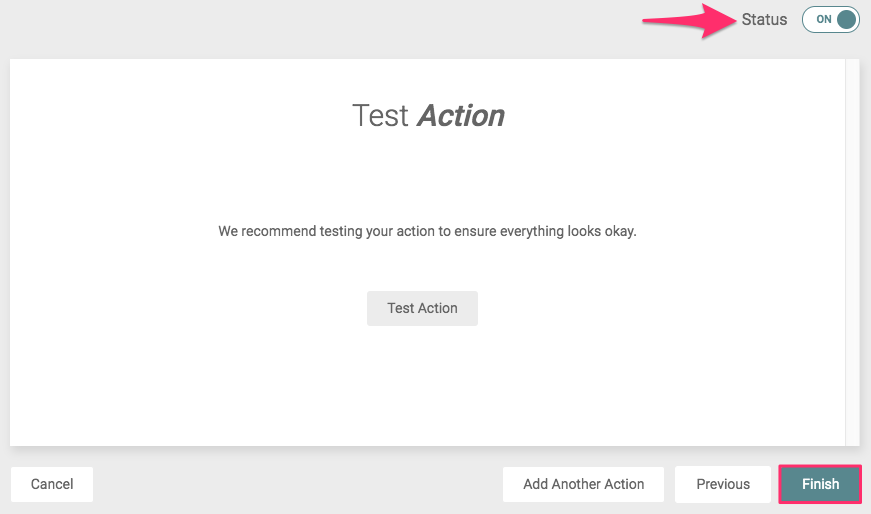Flags and Workflows
For partners subscribed to Select or Enterprise plans.
This article will show you how to use Flag Types to trigger specific workflows which let you work more efficiently. Flag Types help you create notifications so that specific actions are triggered based on a flagged document.
How it works
Workflows can be triggered when a flag is added to, updated, or removed from a document. An example of a workflow may look like:
- Trigger: Flag updated
- Flag Type: Draft
- Action: Send an email to select workgroup
- Action: Also notify the team in workgroup #general channel
For more information on how workflows can help you and how to set them up, read: Quick guide for workflows.
Create a new workflow
You will need to be logged in as a Manager or Administrator.
- Log in to IT Glue and navigate to Admin > Workflows. Then, click on the green + New button to be taken to the new workflow setup screen.

- Select the Flag workflow trigger.
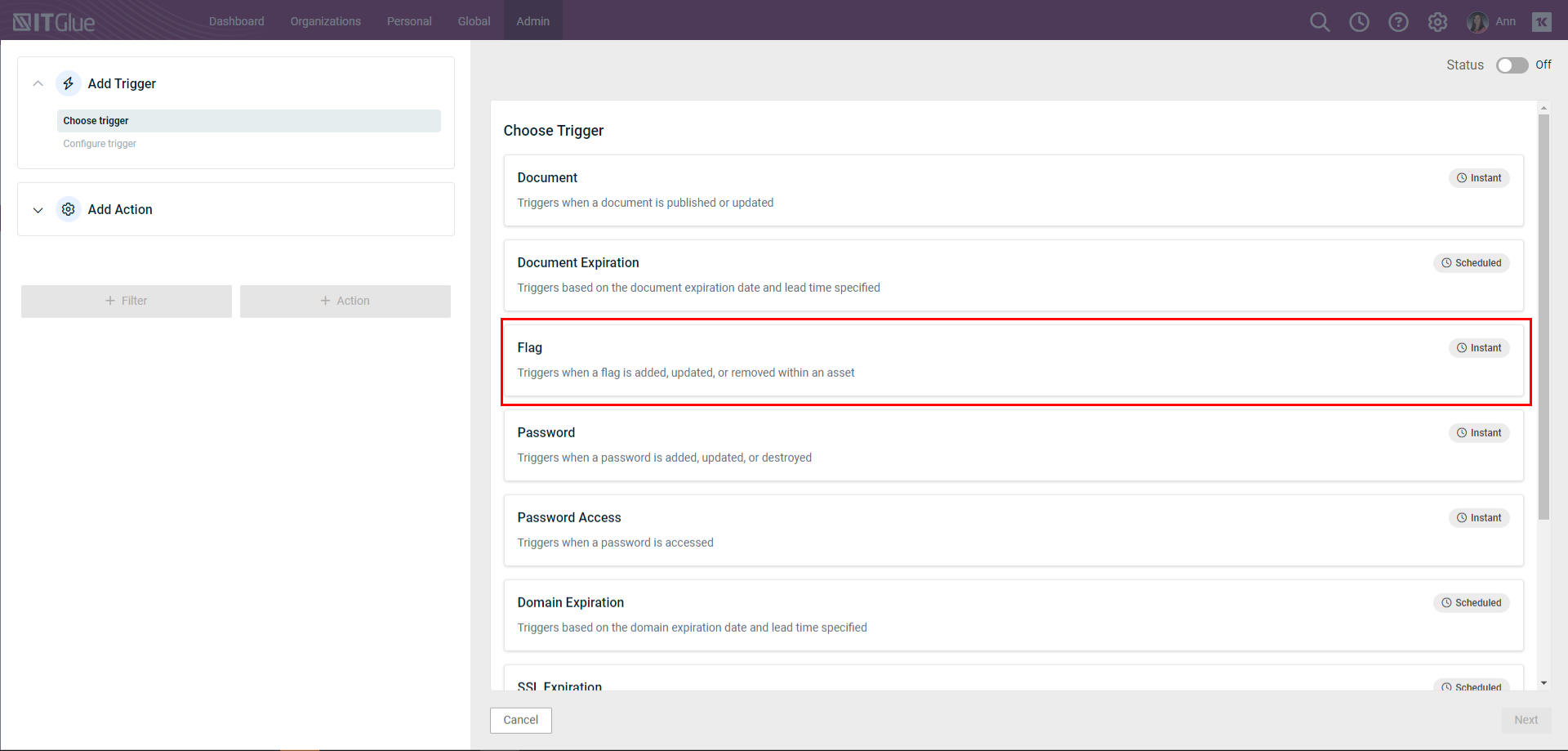
Configure the trigger
- Enter a descriptive name for the notification in the Trigger Name field.
NOTE The name will be shown in the workflows management page so make sure it is globally unique across workflows to make identification easy.
- Enter a Notification Failure Email. If there is a bounce back from the notification, an email will be sent to this email address from notifications@itglue.com.
- Click Next.
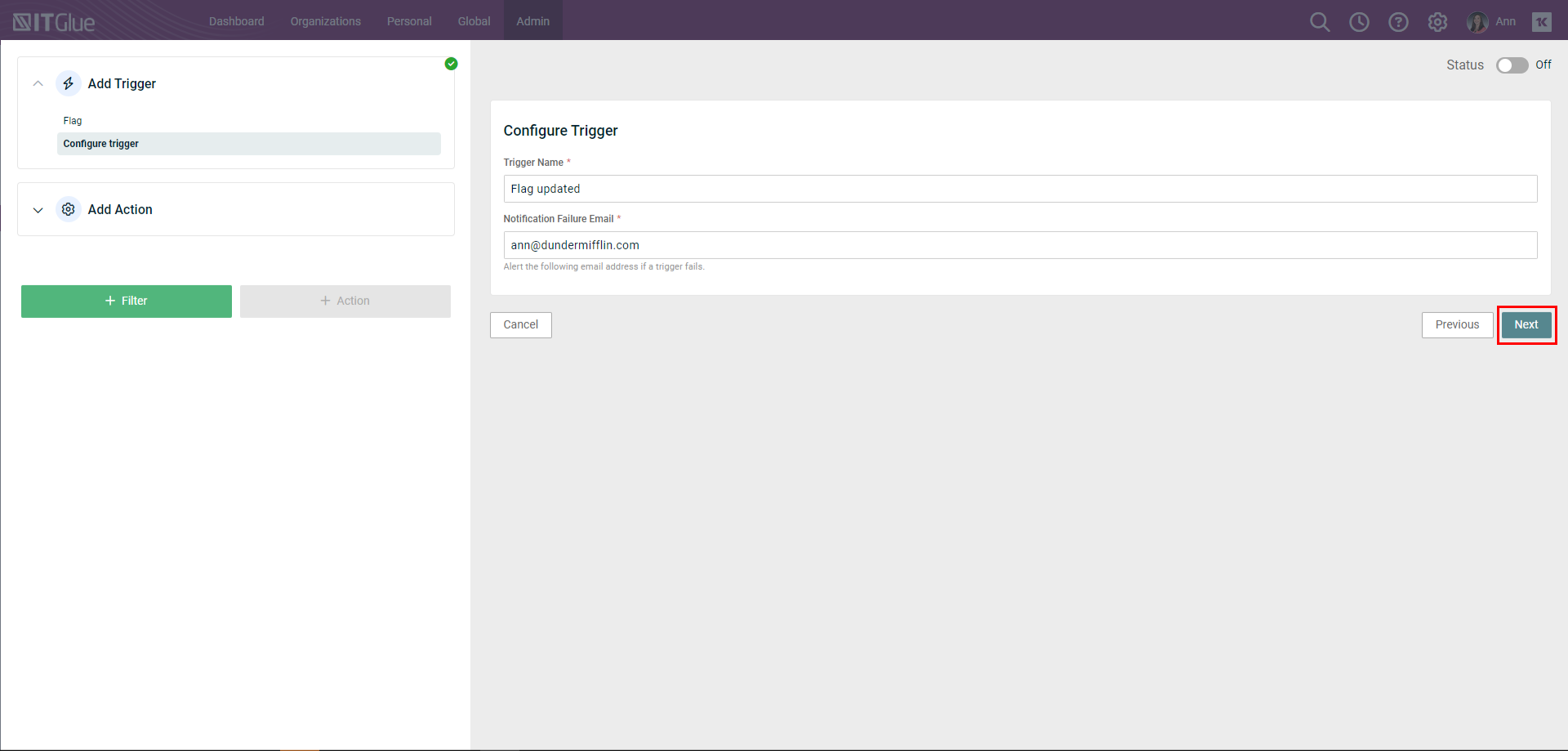
Add a filter
IMPORTANT If a filter is not specified for a flag type, all flag types will trigger the workflow's action as well as supported asset types (currently only Documents).
- Click the + Filter button on the left side of the screen.
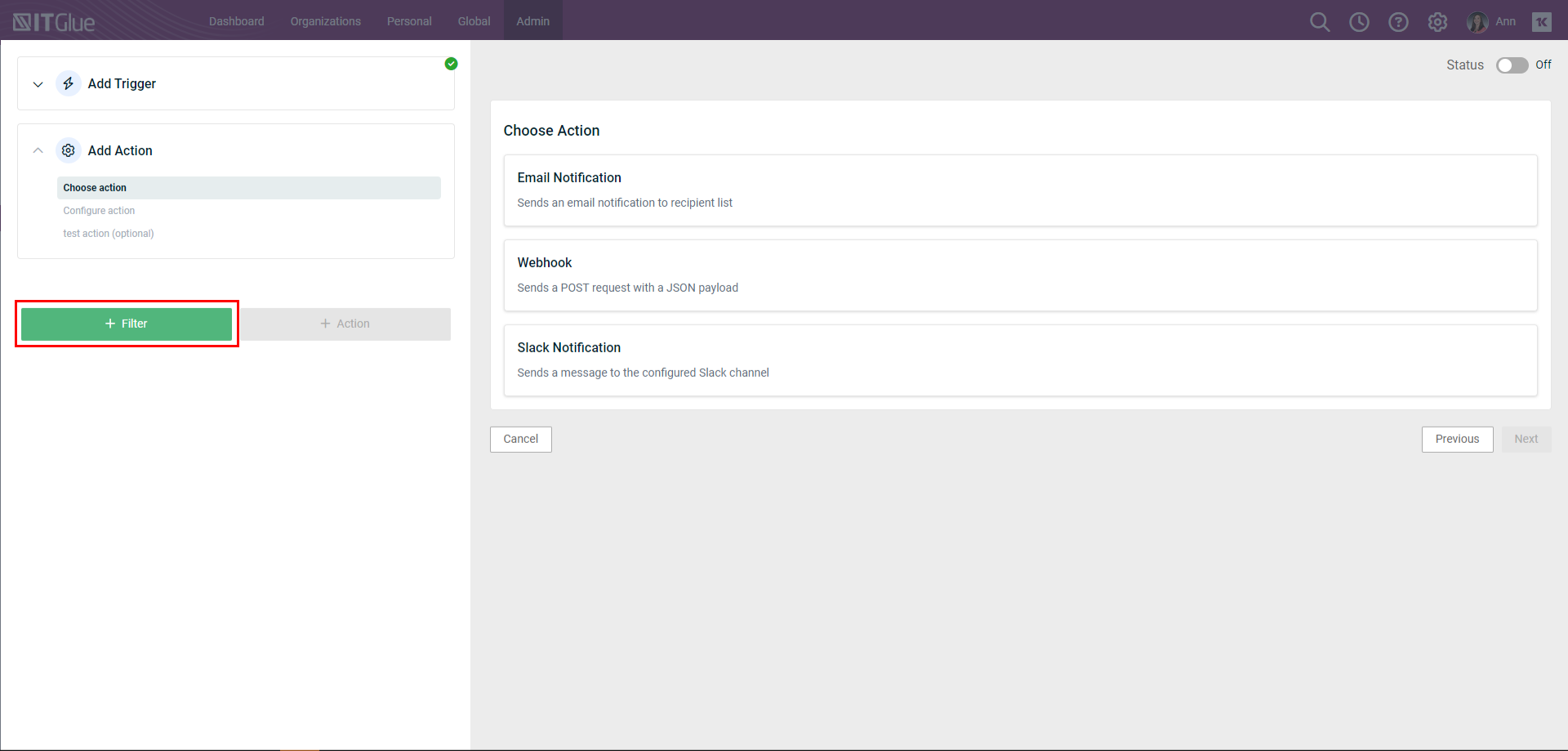
- Select your filter criteria using the drop-downs. To add additional filter criteria, click the plus icon. Setting multiple filters can help you target specific data.

- Click Next.
Choose a notification method
- Choose the notification method (the action that will be triggered). In this example, we are using the Email Notification action. For email notifications, the following is required:
- Action Name - Enter a name for the action (e.g. email to senior tech team)
- Recipients - Enter as many email recipients as you need
- Subject - Enter the subject line for the email
- Body - Enter the body text for the email
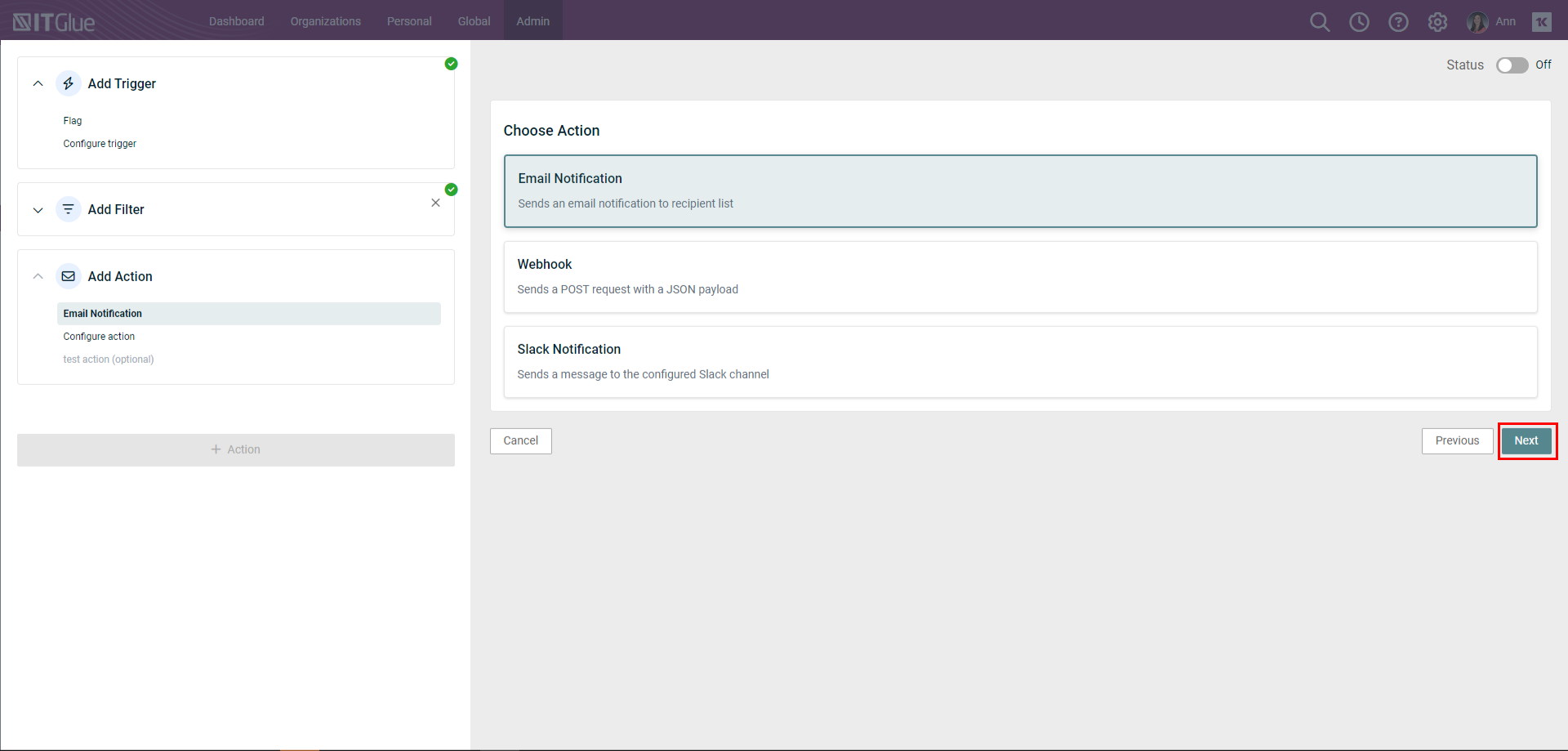
- Click the Next button.
NOTE Webhooks are used to trigger an outbound API message to an external system. This means that you will need a third-party integration for webhooks to work. If you are interested in using webhooks, see the following articles for further reading and to start building webhook-based actions. Please feel free to contact us if you have any questions or need further tutorials.
Configure the action
- Configure your email action using variables (optional). You can use variables in the subject and body fields to pull values from the asset that triggers the notification. All available variables are listed at the bottom of the screen when you click on "Need Help? Click Here to See Available Variables".
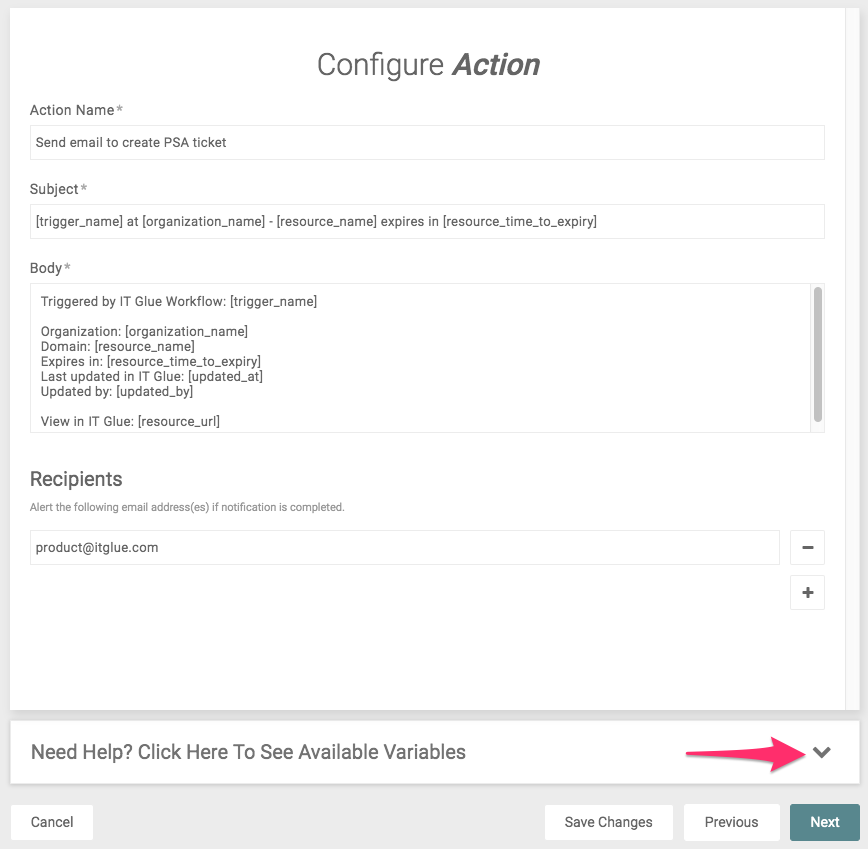
- Click Next.
Test your workflow
Click the Test Action button to perform the job your action is set to do with some test data. If your test fails or needs to be revised, you can fix it before you put the notification into production.
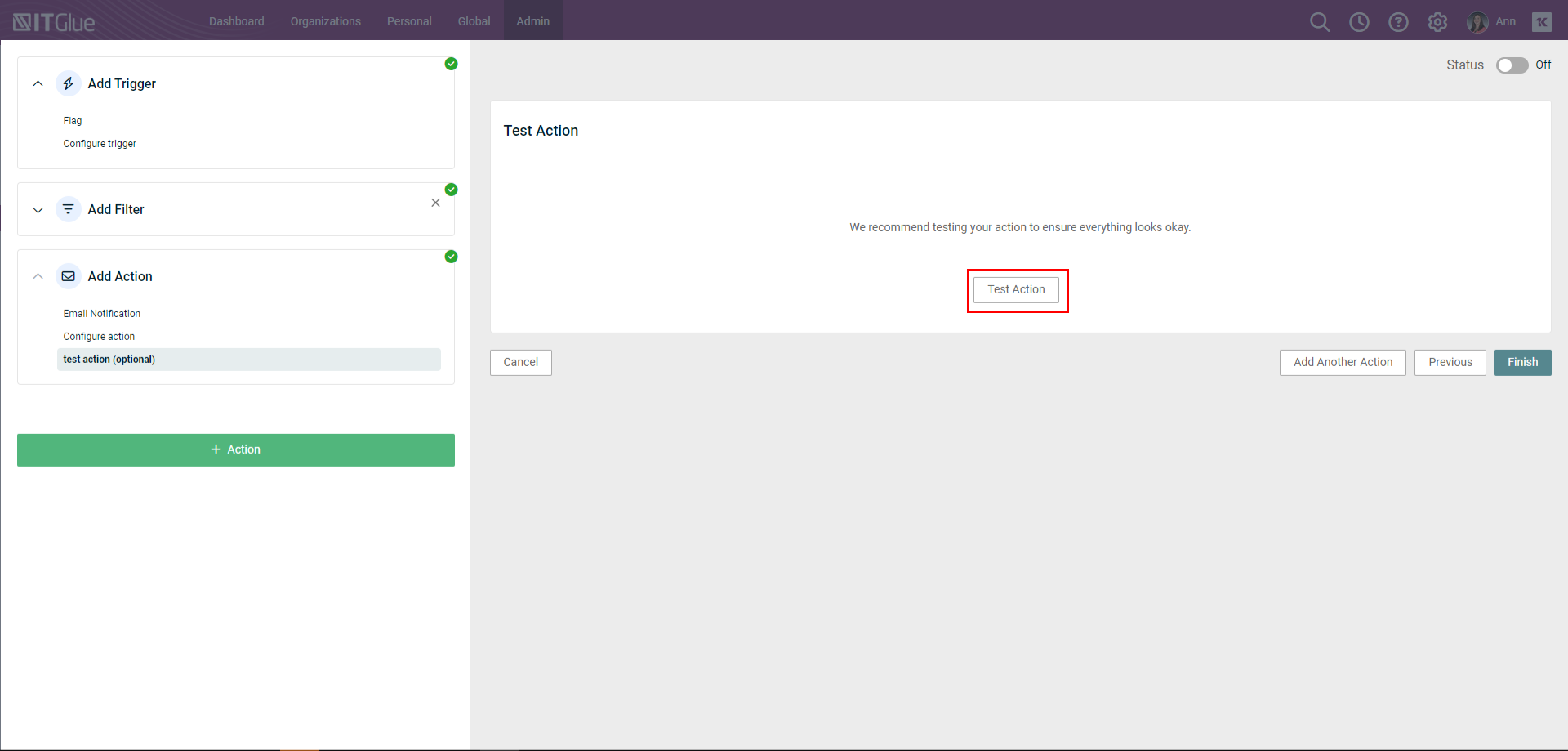
Note that test notifications are sent to the first email recipient, but the actual notifications will be sent to the entire recipient list.
Turn on your workflow
Turn your workflow ON and then click Finish to save all your changes. Your team will start receiving notifications within the next 24 hours. Note that notifications based on document or password triggers will be sent in real time.
